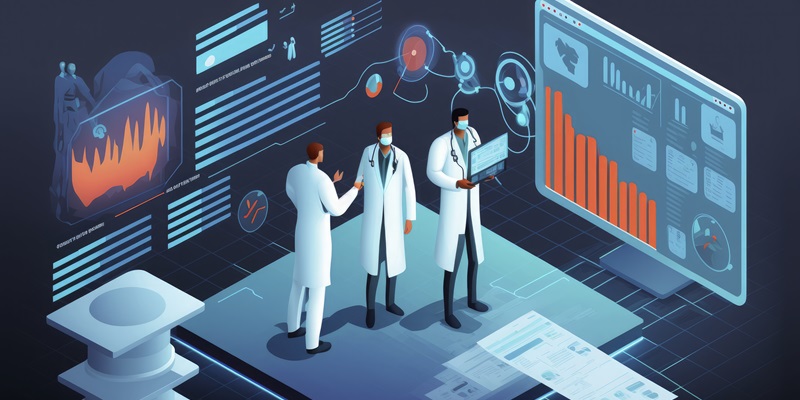In today’s technological landscape, the combination of sophisticated algorithms and comprehensive data analytics is pivotal to the realm of data science. These elements are fundamental in harnessing information across various industries, leading to pivotal advances and innovation. In the healthcare industry, for instance, patient data is analyzed to enhance treatment outcomes and streamline care. Meanwhile, in the finance sector, algorithms parse through market data to predict trends and inform investment strategies. The strategic synergy of algorithms and analytics not only serves to decipher large pools of data but also propels the machinery of contemporary businesses. As these tools evolve, they continue to amplify their importance, intertwining intricately with the operational fibers of diverse sectors. They are the very lifeblood that fuels the progression of industries and the growth of economies, making the nuanced understanding and application of these tools crucial for success in the digital age.
The Foundational Role of Algorithms
Understanding Algorithms in Computation
Algorithms are the foundational components of computer programming, acting as detailed procedural instructions that drive machine operations. They encompass a broad range of procedures from simple tasks to complex problem-solving algorithms. These sets of instructions are crucial as they direct computers in performing calculations and making decisions, thereby enabling them to process data effectively.
Algorithms are integral to a variety of applications, from performing elementary calculations to underpinning sophisticated technologies like machine learning. They provide the structured methodology that our digital devices rely on to accomplish an array of functions. With the advancement of computing technology, algorithms have become increasingly central to innovation, powering search engines, social media algorithms, financial systems, and much more.
Algorithms Making Data-Driven Decisions
In our data-saturated world, algorithms are instrumental in sifting through extensive information sets to discern patterns and execute actions with exceptional accuracy. Crucial systems like search engines rely on these algorithms to scrutinize and make sense of user input, providing users with outcomes that are pertinent and tailored to their specific needs and preferences. Similarly, recommendation engines utilize algorithms to curate personalized experiences, offering suggestions that resonate with individual tastes and habits.
The Power of Data Analytics
The Process of Extracting Insights from Data
Data analytics delves into extensive data repositories, excavating insights and identifying trends. It’s akin to mining for digital gold, employing a multitude of sophisticated tools including statistical methodologies and cutting-edge machine learning technologies. Through these instruments, analysts can filter out irrelevant data, pinpointing the underlying patterns and rhythms that are crucial for shaping informed decisions and strategic plans in various industries.
Transforming Raw Data into Actionable Knowledge
The magic of data analytics is akin to an advanced form of alchemy, where the mundane input of raw data is expertly transformed into the invaluable output of insightful knowledge. Through a deep analysis of what initially may seem to be mere numerical trivia, skilled analysts are able to reveal patterns and predictions regarding market dynamics or shifts in consumer preference.
Machine Learning: A Nexus of Algorithms and Analytics
Machine learning involves algorithms that learn from data without explicit programming, adapting through various techniques. These methods are foundational to advancements like real-time language translation and intelligent digital assistants, significantly altering machine-human interactions.
The evolution of machine learning algorithms hinges on their capacity to absorb and learn from an ever-growing dataset. The ability to refine their predictive models with an increased level of accuracy is paramount to their success.
Data Mining: Uncovering Hidden Patterns
Classification, Clustering, and Anomaly Detection
Data mining delves into the vast volumes of data with techniques like classification, clustering, and anomaly detection. These strategies reveal hidden patterns and connections, acting as a magnifying glass on the complexities within data.
The Importance of Data Mining in Decision-Making
Data mining’s strategic value is immense, serving as the backbone for critical business decisions. With its power to dissect customer demographics and spot market trends, it enables companies to customize their approaches for maximum effect.
Optimization Techniques in Algorithmic Processing
Finding the Best Possible Solution
Optimization techniques aim for the peak of operational efficiency, intricately sorting through a plethora of options to unearth the most efficient path forward. Whether in managing supply chains or balancing financial portfolios, optimization algorithms play a pivotal role.
Optimization in Action: Scheduling and Resource Management
Effective management of both schedules and resources lies in their optimization. Through the use of sophisticated algorithms, the most effective distribution of resources and the establishment of timeframes is discerned.
Addressing the Synergy
The alliance between algorithms and data analytics heralds a united front in the quest for deeper insights and refined processes. Combined, they offer a twofold strength: the algorithm’s precision with the contextual understanding of analytics.
The Transformative Power of Algorithm and Analytics Integration
The synergistic alliance between algorithms and data analytics hints at an era brimming with technological marvels. With their continued development and interaction, these tools give rise to innovative tactics and lay bare opportunities once deemed inaccessible.

